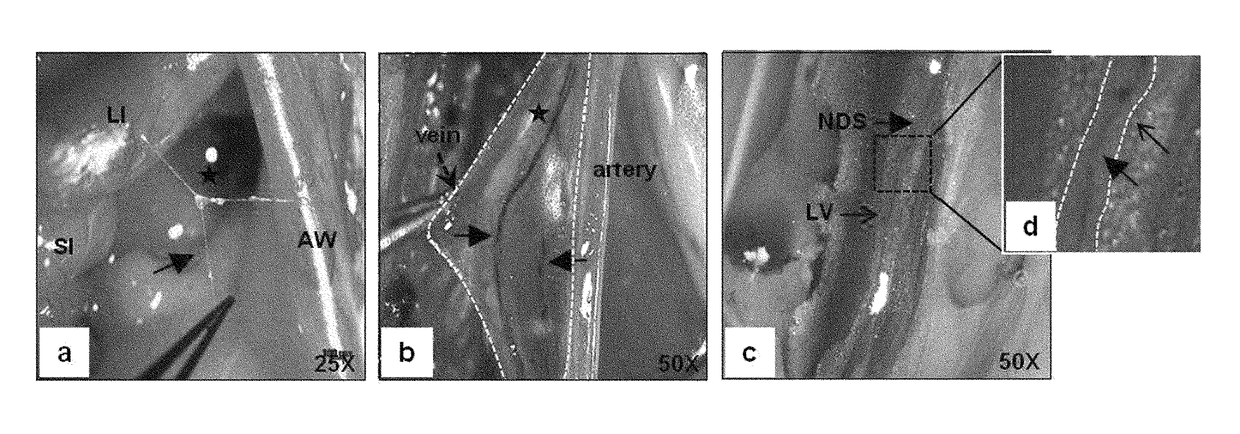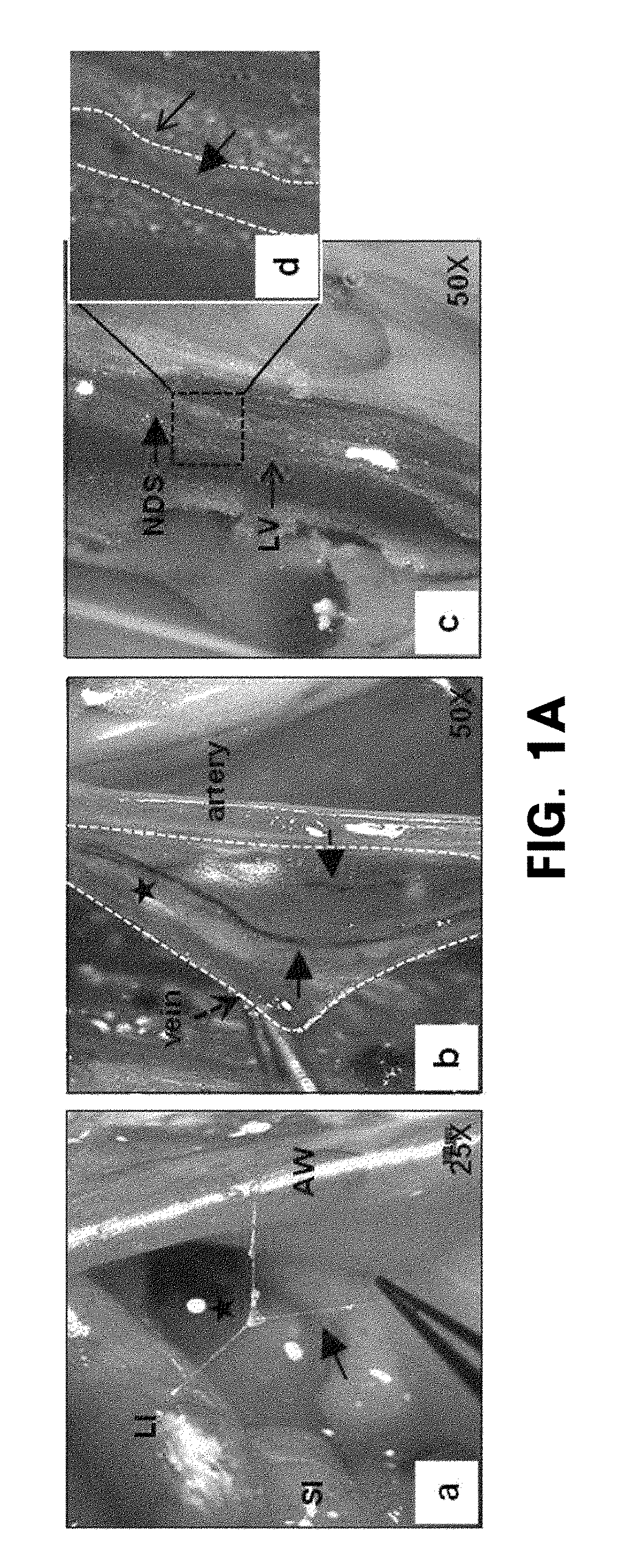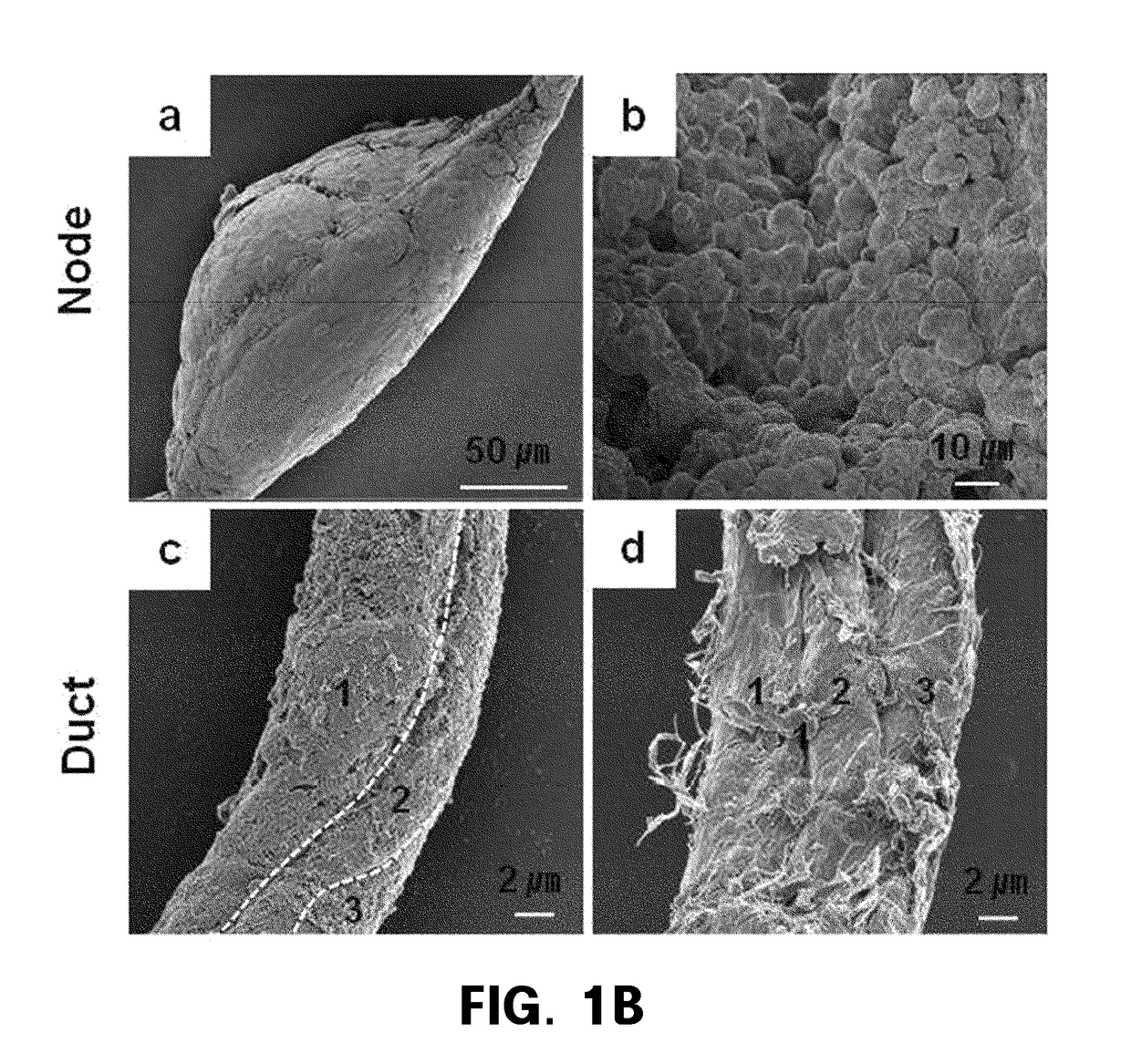Har-nds-derived stem cells, method for separating same, and use thereof
a node and duct system, hyaluronic acid technology, applied in the direction of skeletal/connective tissue cells, extracellular fluid disorders, immunological disorders, etc., can solve the problem of the basic limit of supplying adult stem cells and hematopoietic stem cells
- Summary
- Abstract
- Description
- Claims
- Application Information
AI Technical Summary
Benefits of technology
Problems solved by technology
Method used
Image
Examples
example 1
Characteristics of HAR-NDS Tissue and HAR-NDS-Derived Hematopoietic Cells
[0137]1-1: Process of Obtaining HAR-NDS
[0138]Wild-type, IFN-γ− / − or IFN-γ+.− C57BL / 6 mice (Orient, Korea) were anesthetized by intramuscular injection of Zoletil (2.5 mg / kg) and Rompun (0.5 mg / kg). Subsequently, HAR-NDS was obtained by the following method using a stereomicroscope (Zeiss Stereo Discovery.V20).
[0139]1) To obtain the HAR-NDS on the surface of the small intestine (or liver), an incision was made along the abdominal linea alba, and then HAR-NDS was obtained between the anterior wall and the small intestine (or liver) on the organ surface while the abdominal wall was carefully lifted away,
[0140]2) to obtain vein HAR-NDS, approximately 0.5 ml of 1% alcian blue was injected into iliac veins, the upper and lower portions of the lumbar vein was clamped by forceps, and then the blood was drained by an incision along the blood vessel to obtain HAR-NDS visualized in a blue line in the vein, and
[0141]3) to ...
example 2
Separation of HAR-NDS-Derived Node and Ductal Stem Cells (NDSCs)
[0160]To obtain HAR-NDS-derived NDSCs (control: bone marrow (BM)-derived VSELs), an experiment for separating NDSCs from a cell suspension containing mononuclear cells separated from HAR-NDS was carried out using phenotypic marker antibodies, flow cytometry (FACS) and an FACS sorter. HAR-NDS-derived mononuclear cells were suspended in PBS (pH 7.4; Ca / Mg++ free) containing 1% FBS (Gibco, Carlsbad, Calif.), 1 mM EDTA and 25 mM HEPES, and then stained with the following phenotypic marker antibodies: anti-Ly-6A / E(Sca-1)-PE (clone E13-161.7), anti-CD45-PEcy5 (clone 30-F11) and bioninylated lineage cocktail; anti-CD45R / B220-biotin (clone RA-3 H57-597), anti-Gr-1-biotin (clone RB6-8C5), anti-TCRαβ-biotin (clone H57-597), anti-TCRγδ-biotin (clone GL-3), anti-CD11b-biotin (clone M1 / 70) and anti-Ter-119-biotin (clone TER-119). Secondary antibodies were separated using streptavidin-FITC specifically binding to primary antibodies.
[...
example 3
Characteristics of HAR-NDS-Derived NDSCs
[0164]For SEM and TEM for analyzing morphology and internal structures of NDSCs, NDSCs obtained using flow cytometry and a sorter were prepared and then observed under an electron microscope.
[0165]Electron Microscopy of HAR-NDS
[0166]NDSCs obtained using flow cytometry and a sorter were fixed for 2 hours at 4° C. with a Karnovsky's fixative (2% paraformaldehyde, 2% glutaraldehyde, 0.05M sodium cacodylate buffer, pH 7.2). For transmission electron microscopy, NDSCs were finally fixed for 2 hours at 4° C. with 1% osmium tetroxide (EMS, Washington), dehydrated in ethanol with various concentrations, embedded in SURR resin (ERL, DER, NSA and DMAE mixture; EMS, Washington) and polymerized at 70° C. overnight. Ultrathin (0.5 to 1.0μm) sections were cut with a diamond knife (Diatome, Switzerland) of a ultramicrotome (RMC MTX, USA), stained with uranyl acetate (EMS, Washington) for 20 minutes, followed by treatment with lead citrate for 10 minutes. The...
PUM
 Login to View More
Login to View More Abstract
Description
Claims
Application Information
 Login to View More
Login to View More - R&D
- Intellectual Property
- Life Sciences
- Materials
- Tech Scout
- Unparalleled Data Quality
- Higher Quality Content
- 60% Fewer Hallucinations
Browse by: Latest US Patents, China's latest patents, Technical Efficacy Thesaurus, Application Domain, Technology Topic, Popular Technical Reports.
© 2025 PatSnap. All rights reserved.Legal|Privacy policy|Modern Slavery Act Transparency Statement|Sitemap|About US| Contact US: help@patsnap.com



